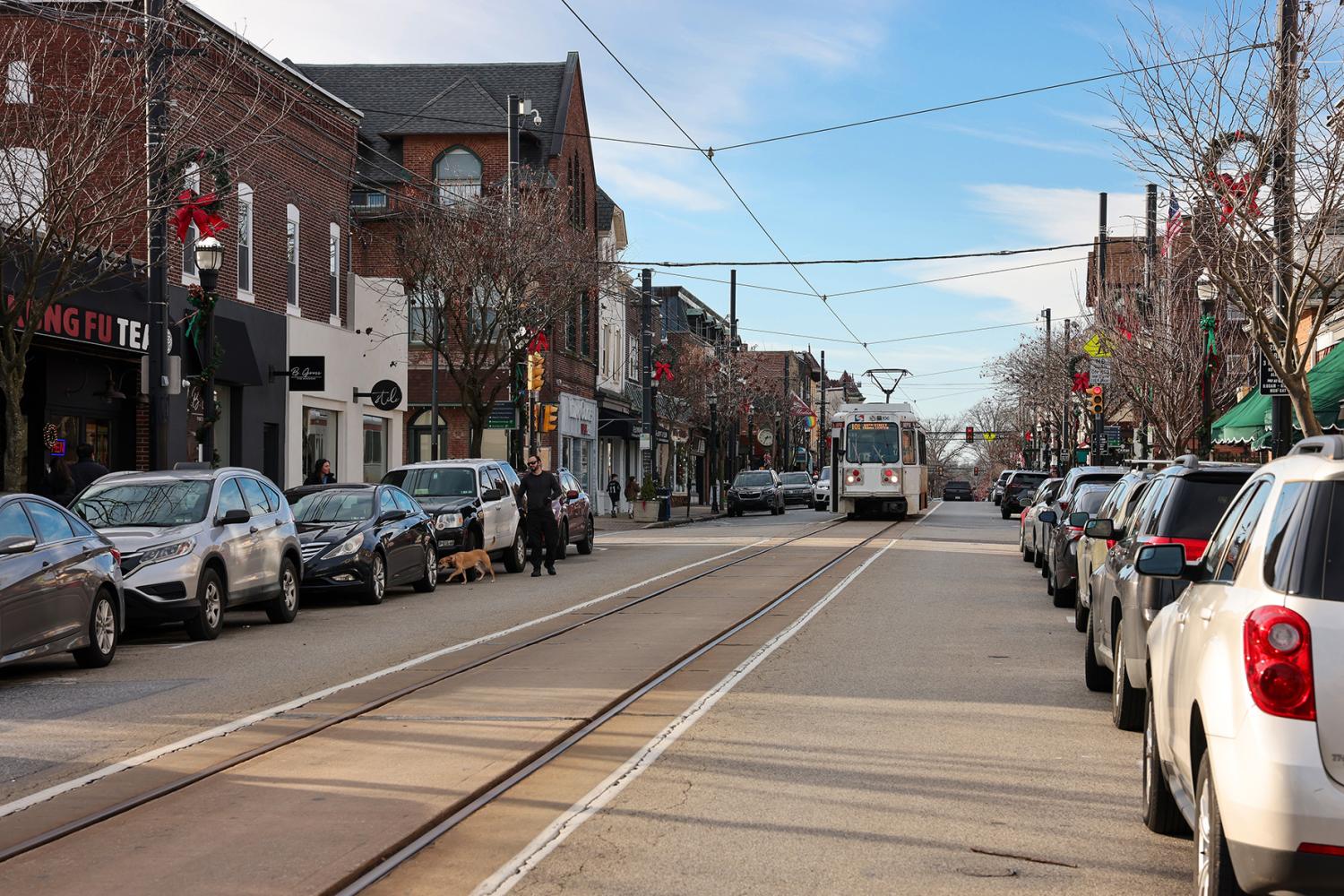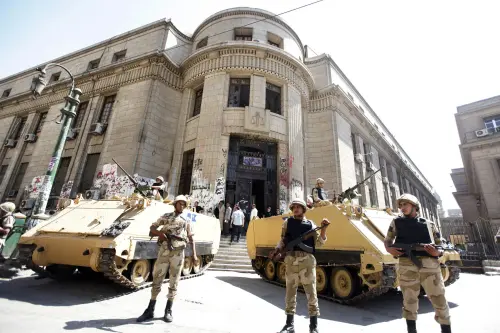Generating over $355 billion in annual output, Southeastern Pennsylvania –which spans Philadelphia, Chester, Delaware, Montgomery, and Bucks counties—is among the nation’s largest and most influential regional economies. With world-class companies, top-tier universities, and a deep talent pool, the region holds extraordinary potential for growth and prosperity.
Yet that potential remains underrealized. Over the past decade, Southeastern Pennsylvania’s economy has lagged in both economic growth and economic mobility. Brookings analysis has found that of the nation’s 50 largest metro areas,1 the region’s growth in productivity and average earnings since 2012 ranked 42nd and 48th, respectively.2 Further, new research from Opportunity Insights has found that the Greater Philadelphia metro area (including Southeastern Pennsylvania’s five counties) provided less upward mobility for workers than any of the nation’s other 50 largest metro areas.
In response, cross-sector leaders from across the region—supported by The Pew Charitable Trusts and Brookings Metro—are aligning around a shared economic development strategy to generate more quality jobs and enhance economic mobility. This report offers a problem statement to motivate the effort. Because Southeastern Pennsylvania is the economic engine of the whole tri-state area, these findings are the equivalent of a “check engine” light. Turning potential into progress will require more focused, coordinated efforts to better leverage assets and efforts across individual counties—and in doing so, drive growth that benefits all.
Southeastern Pennsylvania needs more quality jobs to support economically insecure families
Regional economies grow when they fully develop and deploy the potential of their people. When workers can access quality jobs (those that pay family-sustaining wages and benefits), the advantages are shared between families and the regions in which they live.3 When workers can’t access quality jobs, families either struggle to make ends meet or leave for better opportunities elsewhere.
Such is the reality for the 38% of Southeastern Pennsylvanians living in a struggling family.4 These families do not earn an income high enough to cover their costs of living, including food, housing, child care, transportation, and other essentials. Economically insecure families are much more likely to be headed by Black or Latino or Hispanic individuals and individuals with lower levels of educational attainment, creating inequities that reflect both the availability of quality jobs and distinctive barriers to accessing them.
The impact is generational. More than half of Southeastern Pennsylvania’s children live in struggling families, and research has consistently found that economically insecure children are significantly more likely to continue experiencing economic insecurity in adulthood. As mentioned above, Opportunity Insights research found that the Greater Philadelphia metropolitan region (including Southeastern Pennsylvania) ranked last among the nation’s 50 largest metro areas in social mobility. While the public sector and philanthropy have a role to play in providing the other proven conditions for economic mobility (such as the quality of public schools and infrastructure), these services cannot solve for a regional deficit of quality, accessible jobs.
Closing this gap will require new forms of collaboration among employers, economic development organizations, education and workforce training organizations, and other civic and community-based institutions that focus on job quality and unlocking the full economic potential of the region’s workforce.
Southeastern Pennsylvania needs to enhance competitiveness to generate quality jobs
Part of the equation for improving economic mobility in Southeastern Pennsylvania involves boosting growth in the parts of the economy most likely to generate the good, accessible jobs that lift struggling families into the middle class.
These quality jobs are disproportionately concentrated in “tradeable industries” such as manufacturing, business services, and life sciences. Companies in these industries sell goods and services outside the region and inject new wealth into the regional economy. Tradable industries account for just one-third of Southeastern Pennsylvania’s total employment base, yet generate 44% of the region’s total employee payroll and 53% of its annual economic output. Because companies in these industries must innovate to compete globally, they tend to be more productive and pay higher wages. Tradable industries pay an average wage premium of over $48,100 per year compared to locally serving industries such as retail and health care. As a result, workers employed in tradeable industries are much more likely to earn a living wage, even controlling for educational attainment.
A central challenge for Southeastern Pennsylvania is the competitiveness of its largest tradeable industries: professional services (such as marketing, consulting, finance, and insurance), wholesale trade, logistics, and life sciences. While Southeastern Pennsylvania’s economy has been growing over the past decade, these industries have struggled to keep up with rising domestic and global competition. As a result, growth in locally serving industries outpaced growth in tradeable industries by a factor of nearly 3-to-1 between 2012 and 2023.5 Because of this competitiveness gap, the region added roughly 104,000 fewer jobs in tradable industries than expected given national growth trends during this period.
These competitiveness challenges have significant implications for the region’s workers and families. Had Southeastern Pennsylvania grown at a nationally competitive rate between 2012 and 2023, two-thirds of the jobs it would have added would be expected to pay a family-sustaining wage or provide clear pathways to such jobs. This is a crucial statistic for any stakeholder in Southeastern Pennsylvania who cares about economic mobility, economic and racial inclusion, and worker advancement. Enhancing the competitiveness of key industries—especially those industries that must compete and win globally—can enhance accessibility to quality jobs.
Unlocking Southeastern Pennsylvania’s full economic potential will require public, private, and civic leaders across the five counties to work toward a shared quality jobs strategy, rather than operate in silos.
This regional approach is one of necessity. Market activity does not respect jurisdictional boundaries; commuting patterns spill across borders, with 25% of the region’s workers commuting to a job located outside of their home county. Supply chains, entrepreneurship networks, and transportation infrastructure all operate regionally as well. When footloose companies or workers consider locating in the area, they typically consider the region first, not individual cities or counties. In short, the cities and counties in Southeastern Pennsylvania are not competing against each other, but working together to compete against other global economic heavyweights such as Atlanta, Boston, Chicago, and London.
Despite these linkages, Southeastern Pennsylvania lacks a shared tactics-level strategy for growth in traded industries that concentrate quality jobs—limiting the region’s ability to invest and act at a scale that meets the magnitude of its challenge and potential. No one institution or leader can pursue such a strategy on their own; it requires broad-based buy-in from business, government, education and workforce training, and other civic and community-based organizations.
Recognizing this need, the Southeastern Pennsylvania Economic Collaborative, a network of economic and workforce development leaders from across the five-county region, has come together with support from Brookings Metro and Pew to deliver a market assessment, engage cross-sector partners to prioritize industries, develop actionable strategies, and establish a shared operating structure for implementation. By working together to harness the region’s strengths, Southeastern Pennsylvania’s leaders have a unique opportunity to fulfill its potential for lasting prosperity.
-
Acknowledgements and disclosures
Support for this project was provided by The Pew Charitable Trusts. The views expressed in this report are those of its authors and do not represent the views of the donors, their officers, or employees.
-
Footnotes
- For the purposes of this analysis, the Southeastern Pennsylvania region is evaluated as its own metropolitan area. The 11-county Philadelphia-Camden-Wilmington, PA-NJ-DE-MD metropolitan statistical area that encompasses Southeastern Pennsylvania is excluded from these rankings.
- The Southeastern Pennsylvania region (Philadelphia, Chester, Delaware, Montgomery, and Bucks counties) is part of the 11-county Philadelphia-Camden-Wilmington, PA-NJ-DE-MD metropolitan statistical area, which generated more than $500 billion in gross output in 2023. Over 70% of this economic activity was concentrated in Southeastern Pennsylvania.
- This analysis defines “quality jobs” as jobs that pay a wage sufficient to sustain a typical family in Southeastern Pennsylvania and that provide employer-sponsored health insurance, or that provide strong mobility pathways to such jobs within 10 years.
- Brookings Metro defines “struggling families” as those that do not earn a total income sufficient for covering the standard costs of necessities such as housing, child care, transportation, food, health care, and other necessities. This analysis uses data from the American Community Survey’s 2023 1-year microdata sample and county-level cost data from the University of Washington to identify struggling families.
- Based on Brookings analysis of Lightcast data from 2012 to 2023.
The Brookings Institution is committed to quality, independence, and impact.
We are supported by a diverse array of funders. In line with our values and policies, each Brookings publication represents the sole views of its author(s).





